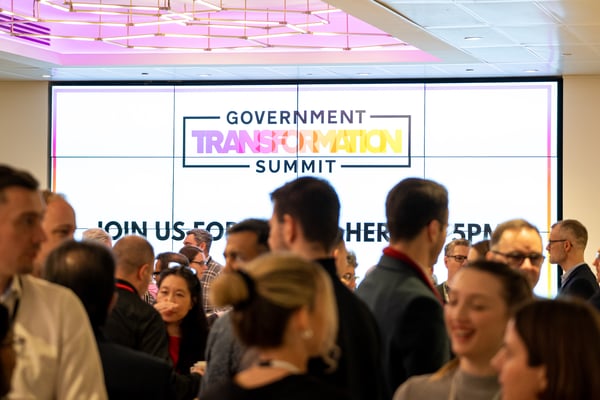Celebrating public sector innovation at the Government Transformation Summit
Over 130 digital, data and technology (DDaT) Civil Service leaders and experts gathered on Thursday at the heart of Westminster to exchange perspectives on key delivery challenges and opportunities at the Government Transformation Summit, Government Transformation magazine’s flagship event and celebration of public sector innovation.
During the one-day conference, held at the historic Church House, senior public servants from the UK and overseas joined 15 parallel discussion groups focused on themes ranging from performance, service automation, and cross-government functions, to diversity, and citizen experience, among others.
From the centre stage, Government Transformation magazine’s GM, David Wilde, moderated a series of panels that explored in-depth the future of government delivery models, how public sector leaders can be equipped to drive digital change, and ways in which government can accelerate delivery.
 “Don’t wait until you’ve got the perfect plan,” said Lord Francis Maude, Former Paymaster General and Cabinet Minister responsible for establishing the Government Digital Service, at a panel dealing with ways in which public sector organisations can respond to delivery challenges in an agile way. “The best is the enemy of the good. Find what you can do, generate momentum and be ready to do things that don’t work.”
“Don’t wait until you’ve got the perfect plan,” said Lord Francis Maude, Former Paymaster General and Cabinet Minister responsible for establishing the Government Digital Service, at a panel dealing with ways in which public sector organisations can respond to delivery challenges in an agile way. “The best is the enemy of the good. Find what you can do, generate momentum and be ready to do things that don’t work.”
Complementing these panel discussions, Civil Service leaders from the UK and overseas offered their insights into balancing agility and governance, reimagining the citizen experience and equipping the Civil Service with the skills and talent required for the future problems and opportunities through keynote speeches, including from some of the Summit’s sponsors, such as Adobe, SolarWinds, Mastek, Rubrik, Fujitsu and Snowflake.
A unique conference format
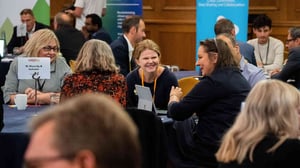 The Discussion Table format of the Government Transformation Summit allowed delegates to share ideas and experiences candidly with their peers under the Chatham House rule.
The Discussion Table format of the Government Transformation Summit allowed delegates to share ideas and experiences candidly with their peers under the Chatham House rule.
Discussion tables featured expert perspectives from the UK and overseas, and led to animated discussions around the future of government delivery - which will be featured in a summary of event outcomes, the Government Transformation Playbook.
International perspectives
The Summit counted with the participation of international public sector delegates and speakers, who added a fresh perspective to many of the issues identified by delegates during the day.
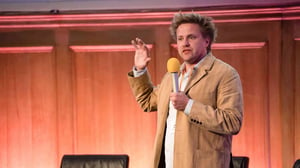 Marten Kaevats, Estonia's former Government Chief Innovation Officer, shared the experience of his country’s digital success. Although Estonia’s digital progress is often attributed to the country’s small size and lack of legacy systems, Kaevats believes that the lessons are transferable to bigger countries with more complex systems.
Marten Kaevats, Estonia's former Government Chief Innovation Officer, shared the experience of his country’s digital success. Although Estonia’s digital progress is often attributed to the country’s small size and lack of legacy systems, Kaevats believes that the lessons are transferable to bigger countries with more complex systems.
“One of my main takeaways is that it is not about the power of technology, it is only about building a culture and mindset that is ready to adopt, and adopt faster,” Kaevats said during a keynote speech titled ‘Mindset for Long-term Change’.
“Digitalisation and the change of communication models are the glue that sticks us all together, and are changing rapidly. This gives us a driver to completely reinvent the public sector step by step. It's an evolution and growth process.”
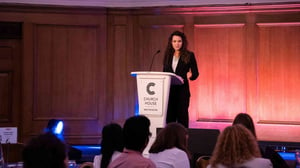 Justyna Orlowska, Prime Minister's High Representative for Government Technology in Poland, spoke about the importance of having strong technology foundations in the education system to ensure a pipeline of digitally savvy citizens able to leverage the opportunities brought by technology.
Justyna Orlowska, Prime Minister's High Representative for Government Technology in Poland, spoke about the importance of having strong technology foundations in the education system to ensure a pipeline of digitally savvy citizens able to leverage the opportunities brought by technology.
Among the diversity of thought and opinions, there was a common thread pointing at the real hindrance when governments work to implement technology solutions in their public service delivery: culture and people. Positive lessons during the pandemic demonstrated however that change is possible - and necessary.
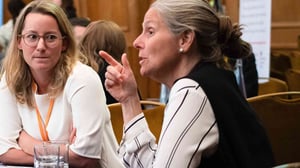 As Liz McKeown, Executive Director at the Treasury Board of Canada Secretariat, shared during a panel discussion on equipping leaders for digital success, “change is risky, but not changing is riskier.”
As Liz McKeown, Executive Director at the Treasury Board of Canada Secretariat, shared during a panel discussion on equipping leaders for digital success, “change is risky, but not changing is riskier.” 



